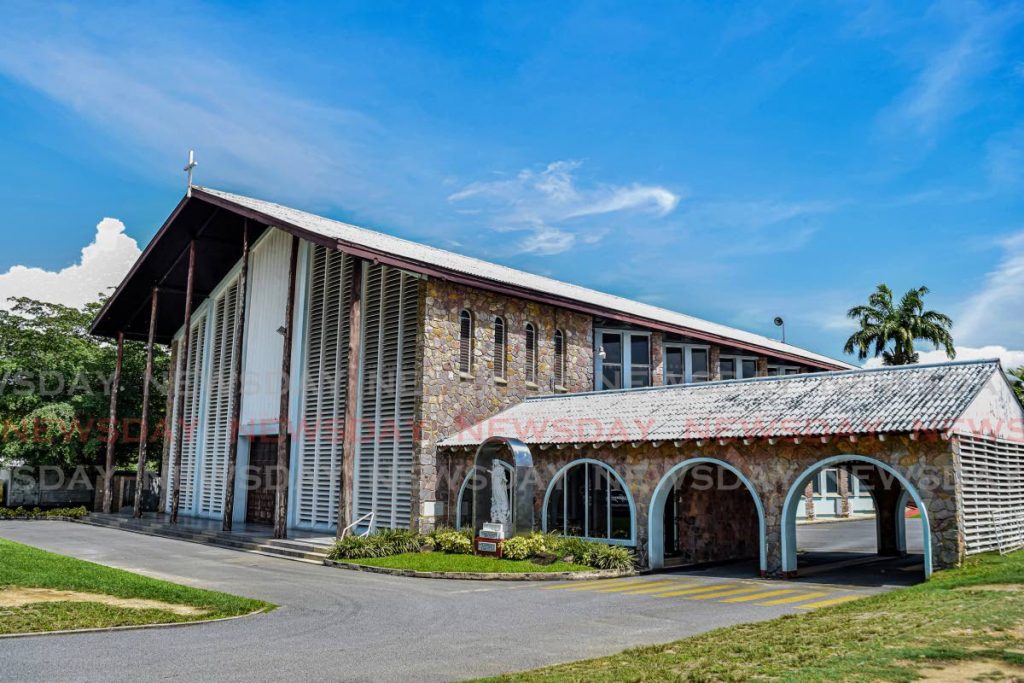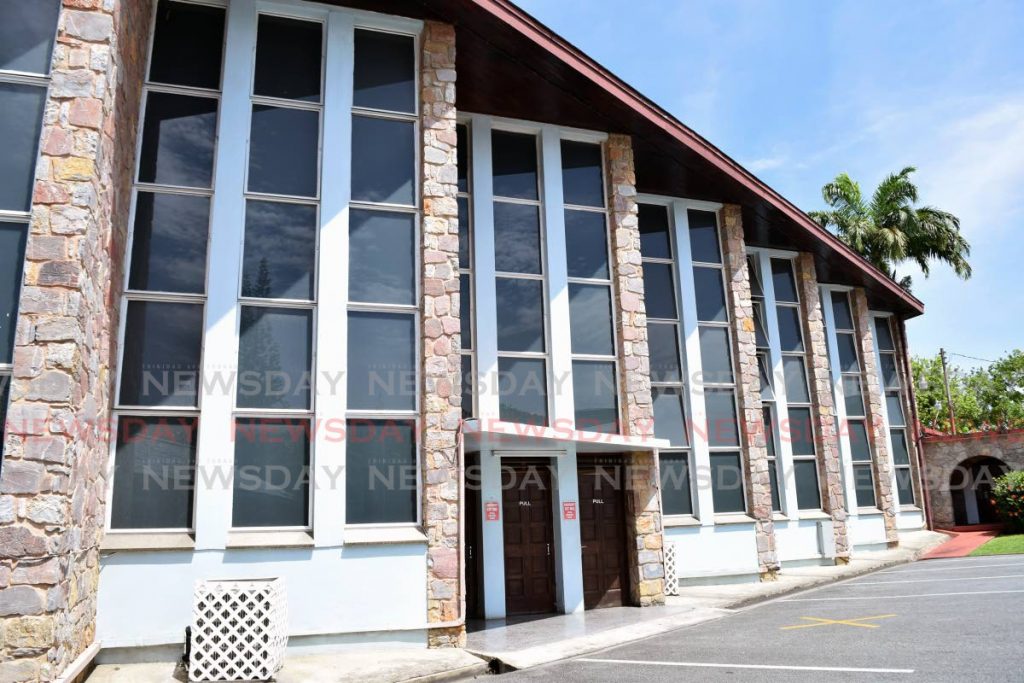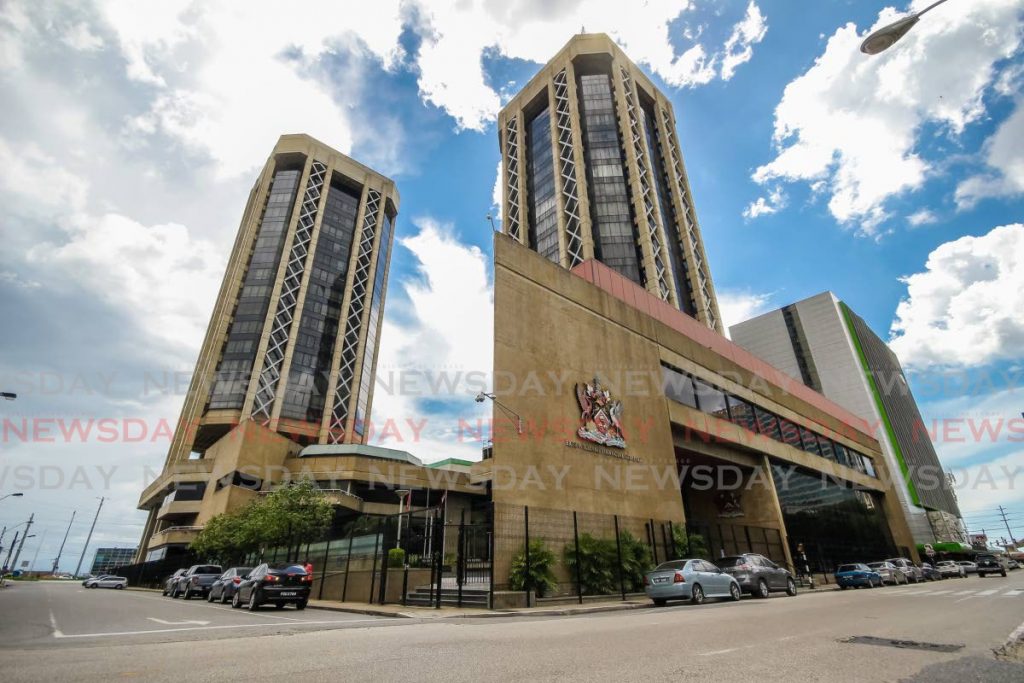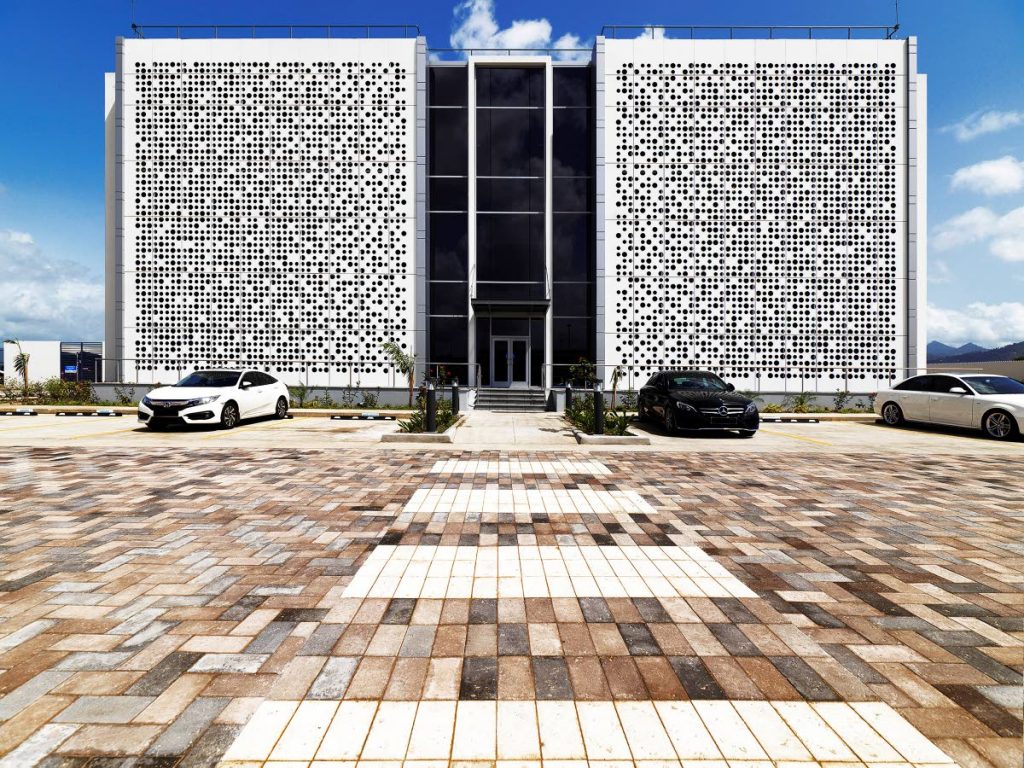ACLA: Let architecture celebrate TT culture

CARLA BRIDGLAL
Architecture is more than just designing a building to look pretty. It has to be functional. It needs to have integrity (both structurally and artistically). And it needs to resonate with the environment in which it stands.

“A building starts with the architect. From there, engineers take it up with their schemes to make sure the building performs structurally. But without the architect, there is no building,” said Laura Narayansingh, director at ACLA architecture.

Architects, then, have to be cognisant of a range of subjects. “We discuss almost daily aspects of our anthropology as Trinidadians. It really informs our designs on an almost subliminal level. Architects have to be aware of everything – science, art, history. Culturally, I think it’s inherent to our design. And with that thought in mind, we have to be constantly observant.”
Trini to the bone
ACLA, which recently rebranded from acla:works, celebrates its 75th anniversary this year. The company was founded in 1945 by legendary local architect Anthony C Lewis, perhaps best known for his design of the Church of the Assumption in Maraval, which today is an historic site, according to the National Trust. The firm, Anthony C Lewis and Associates, was the first indigenous architecture firm in TT. Over the years, it has been renowned for its designs of some of the most iconic buildings, including the Eric Williams Financial Complex (the Twin Towers) and the Hall of Justice in Port of Spain.
“There are many firms in TT and being the first is a great honour for us to be part of that legacy, that tradition,” said Gary Turton, another of ACLA’s directors. “Initially architects were importers to do larger projects. Having a local practice allowed local expertise to develop. It’s also a skill that is exportable.”

“The practice focuses a lot on defining our style as a culture. So, from the beginning, we incorporate local materials. I think when people think of architecture in Trinidad they think of the Magnificent Seven or the National Academy for the Performing Arts, but there are so many other buildings that have become (known) as significantly Trinidadian because of architects observing the culture and translating that into a building,” Narayansingh added.
So, what’s Trinidad’s architectural style? Like its people and its culture, it’s very complex.
“To describe it as a style is missing the point. It’s really imbuing a bit of the culture, as well as material into buildings that respond to the climate that’s particular to the country. All of these things make it uniquely Trini but over time certain buildings take on a sort of iconic status that people recall. The Twin Towers, for example,are on the $100 bill. So the buildings become part of the cultural identity.”
Local content, global vision
ACLA has done work up the islands, including Barbados and the Eastern Caribbean but plenty of its international exposure comes from being the on-the-ground architect on several local projects handled by international construction firms.
Ironically, though, it’s on some of the more recent government projects that foreign architects tend to get the edge over local.
“If a project is conceived…they don't realise that, you know, Trinis have done office buildings for over 75 years in the country. I mean, the Twin Towers is a testament to the scale and the potential of local content, but yet, you know, I don't want to name names, but there are buildings recently that they will use foreign architects for that could easily have been done by a local architect,” Turton said.
Which, Narayansingh added, would be a much better reflection of the people of TT.
“That’s the benefit of using a local architect rather than something that really isn't exportable because it's done everywhere else, you know what I mean? It has helped us market our economy and our culture. Our language is unique, so it won’t look like everywhere else.”

Turton noted that there’s an international protocol among architects for working in a foreign country. It’s important to work with a local architect because of their knowledge of the social, political, economic and cultural factors that can affect design.
“A good example is (UK architect Norman) Foster was doing a building in Hong Kong, and they have Xs all over the building structurally, but an X in China is bad luck. That’s the kind of (cultural awareness) you need to have, because without it, your project could have a (negative) local reception.”
Why hire an architect?
A building is probably the biggest investment a person will make in his or her lifetime. And while an architectural schematic isn’t cheap, in the long run, it could actually help enhance the longevity, functionality and value of a building. It all comes down to art and design. And an architect’s role is to seamlessly integrate both so they create something aesthetically pleasing, yet practical.
“Art is purely an individual expression of something, whereas design tries to solve a particular problem,” said Ricardo Newallo, also a director at the firm. Designing a building is solutions-oriented, and architects are particularly well-suited to solving problems arising out of the environment.
“Architects try to look at the broader picture, and that's not just the material limitations and statutory limitations, but it's also consideration of past, present and future needs. It goes beyond construction and into sociological and psychological aspects of the environment.”
Architects are a part of the construction industry, but they aren’t necessarily engineers (although they do still have to know a lot about maths and physics). There are also fewer than 100 registered architects in TT, but a lot more engineers.
Structural engineers focus specifically on the structural component of a building – how it can withstand earthquakes, hurricane winds and even gravity.

They are guided by architects who develop the form of the building and how the space is supposed to function within an environment, whether it’s urban, commercial or residential. They also have to consider the future use of the space, as well as how it blends into its environment. That can extend to considerations like temperature inside the building, using natural lighting and blending it with artificial light for usability.
“I think the structural engineer is more concerned with formative aspects from a design standpoint – where the building will stand to withstand loads and lateral forces and that sort of thing, so it's more of a technological or technical approach,” Narayansingh said. “There’s a greater understanding (from the public) about what engineers do, versus what architects do. I know before I became an architect even I didn’t understand what we do.”
There is a TT Institute of Architects and the profession is regulated by the Board of Architecture, a statutory body under the Architecture Act (1992). To be an architect is rigorous. Prospective professionals have to go through six or seven years of training, then work for at least three years under the supervision of a senior architect before they can be registered. There’s also no architectural school in TT, so anyone wanting to study architecture has to do so abroad. (The only architecture school in Caricom, the Caribbean School of Architecture, is at the University of Technology in Jamaica.)
So hiring an architect means paying for that expertise, although Narayansingh, Turton and Newallo all understand why some people might be hesitant.
“It's hard for some people to even differentiate an architect-designed building from a non-architect-designed one, and with that in mind, cost becomes the primary decision-making factor. And when you don't have that appreciation or that awareness, it's hard to equate the cost of construction with the value, the longer-term intangible value of what architectural design could offer,” said Narayansingh.
Architecturally designed-buildings are more energy-efficient, often increase the property value of an investment and can save money in construction, from efficient use of space, material costs or just general construction mistakes.
The art of architecture
So, what makes a building timeless? Newallo recommends going with an open plan that allows for easy transitions as time goes by – and that’s for both residential and commercial spaces.
“It gives them that flexibility to reconfigure spaces as needs change over time.”
“A lot of our buildings are almost pared down to the components. So there's a kind of as-honest-as-possible expression of the components that make up the building. And it's really in the way that we put it together that gives it any sense of style. But largely to keep it future-proof, there’s a kind of architectural honesty that we approach to building. So, you know, when we're trying to determine what’s beautiful, it really comes down to a sense of balance or harmony that you can perceive in the way that it's composed as you look around. It’s kind of uniform,” said Turton.
“We've all been trained to understand what a good proportion looks like. And we build that into all of our other things. I think (what makes a building timeless) is based on the nature of its proportions. You can always affect the cladding, you can repaint, add stone tile – you can modernise the facade – but once you have inherently good proportions, you’re good to go,” said Narayansingh.
There's also a benefit to the culture and society to have a building speak of its time, said Newallo.
“We like and admire the Magnificent Seven now for what they are and what they were but if you were to build those buildings now, they would be different. And perhaps they should be different, because we are different as a culture and a society. And as time goes on, these buildings continue to exist and we should all still be able to relate to our culture. Buildings are a really good way of tracing our culture and society over time.”
In the new world, architects do play a role, said Turton.
“The colonial architects designed buildings for a government that reflected their links back to Europe, and European links back to ancient Rome and Greece.
"But in the Americas and the Caribbean, we have moved into this post-colonial era. What will define the buildings of our future? For that we need architects – and we need local architects.”
Sidebar
Assumption Church – revolutionary design
The following is the National Trust's feature on the Church of the Assumption which highlights how the architect Anthony C Lewis came up with a design that makes the Maraval church distinctively local in concept.
In 1949, Anthony C Lewis was asked by the Catholic Archbishop to design a church for Maraval. Lewis wanted to design something really ground-breaking. The churches in Trinidad were all based on the cruciform plan, popular in Europe and America. These designs were not conducive to the West Indian climate and uncomfortable for the congregation. He also wanted to design a building that would make his work stand out. It is rare for an architect to have complete control of any project or not make compromise. He felt that he had the freedom to create in a way that he had never experienced before.
Lewis had visited the site prior to making his offer and already had several ideas in mind. The land was bordered by trees, with a pink poui dominating. It was an opportunity for Lewis to incorporate the theories and philosophies he had learnt from the work of Van de Roche and Wright. Lewis used natural pink, blue and yellow sandstone to reflect the colours of the poui. He designed with natural materials in mind, indigenous limestone and greenheart timber with natural lighting.
The Church of Assumption did not follow the traditional cruciform designs and uses a non-traditional orientation to provide soft filtered light and good cross-ventilation for the early morning celebration of mass. During the construction, Fr Connolly, the parish priest overseeing the project on behalf of the church, was heavily criticised for allowing a design that appeared more like an aeroplane hangar than a church. The criticisms were unfounded, however, as the resulting church is one of the finest examples of modern architecture in Trinidad.
Source: https://nationaltrust.tt/


Comments
"ACLA: Let architecture celebrate TT culture"